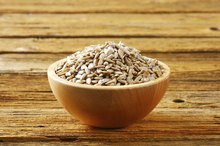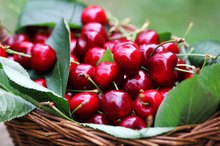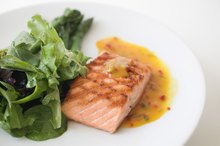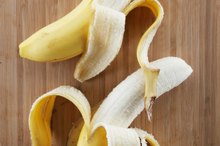Foods to Lower Potassium Levels
Potassium is an important mineral for your body’s functioning. When you experience high blood-potassium levels, your body will respond with adverse symptoms, including impaired muscle function and an irregular heartbeat. If your physician has diagnosed you with hyperkalemia, a condition where your potassium levels are high, she may recommend a low-potassium diet. Because most foods contain some potassium, it is important to pay attention to serving sizes in order to ensure your low-potassium food choices do not turn into high-potassium choices, according to the University of Rochester Medical Center.
Vegetables
Many vegetables are high in potassium, so limit vegetable servings to two to three servings per day, according to the website UptoDate. Although vegetables such as white and sweet potatoes can be high in potassium, you can use a process known as leaching to remove potassium from the foods, according to the University of Rochester Medical Center. To do this, peel the potato and then cut it into small pieces. Place the potatoes into a container, then pour enough water to completely soak them. Cover the container, then refrigerate for four hours. The potassium will be attracted to the water and begin to draw out of the potatoes. Be sure to drain the water before cooking. You also can follow the same process for carrots, beets and rutabagas, according to the National Kidney Foundation. Follow a similar process to reduce the potassium intake of squash, mushrooms, cauliflower and frozen greens.
- Many vegetables are high in potassium, so limit vegetable servings to two to three servings per day, according to the website UptoDate.
- Although vegetables such as white and sweet potatoes can be high in potassium, you can use a process known as leaching to remove potassium from the foods, according to the University of Rochester Medical Center.
Meat/Meat Alternatives
Eating Too Much Potassium
Learn More
Pay careful attention to serving size when consuming meats to ensure you do not take in an excess amount of potassium. According to the Cleveland Clinic, for the following meats, a 1-oz. serving size represents 120 mg of potassium: unsalted bacon, beef, chicken, turkey, poultry, tuna, salmon, lamb, veal, pork or liver. Meat alternatives include a 3.5-oz. serving of tofu or 1.5 oz. of peanut butter.
- Pay careful attention to serving size when consuming meats to ensure you do not take in an excess amount of potassium.
- According to the Cleveland Clinic, for the following meats, a 1-oz.
Fruit
A low-potassium diet typically involves eating one to three servings of fruit per day, according to UptoDate. Examples of low-potassium fruits include apples, blackberries, raspberries, strawberries, cherries and coconuts, according to the Cleveland Clinic. Grapes, honeydew, red plum, raisins and watermelon also are low-potassium foods.
Grains
What Foods Not to Eat to Avoid High Potassium Levels
Learn More
Starch sources such as rice, noodles and pasta can be healthy for those needing to consume a low-potassium diet, according to the National Kidney Foundation. Choose refined-grain foods over whole-grain foods, which are higher in potassium.
Related Articles
References
- University of Rochester Medical Center: Potassium Restricted Diet
- National Kidney Foundation: Potassium and Your CKD Diet
- UptoDate: Low Potassium Diet
- Cleveland Clinic: Potassium Guidelines for Patients with Heart Failure
- Arnold R, Pianta TJ, Pussell BA, et al. Randomized, Controlled Trial of the Effect of Dietary Potassium Restriction on Nerve Function in CKD. Clinical Journal of the American Society of Nephrology. 2017;12(10):1569-1577. doi:10.2215/cjn.00670117
- A to Z Health Guide. Potassium and Your CKD Diet. National Kidney Foundation. Published November 2, 2018.
- National Institutes of Health Office of Dietary Supplements - Potassium. Nih.gov. Published 2017.
- Raebel MA. Hyperkalemia Associated with Use of Angiotensin-Converting Enzyme Inhibitors and Angiotensin Receptor Blockers. Cardiovascular Therapeutics. 2011;30(3):e156-e166. doi:10.1111/j.1755-5922.2010.00258.x
- St-Jules DE, Goldfarb DS, Sevick MA. Nutrient Non-equivalence: Does Restricting High-Potassium Plant Foods Help to Prevent Hyperkalemia in Hemodialysis Patients? Journal of Renal Nutrition. 2016;26(5):282-287. doi:10.1053/j.jrn.2016.02.005
Writer Bio
Rachel Nall began writing in 2003. She is a former managing editor for custom health publications, including physician journals. She has written for The Associated Press and "Jezebel," "Charleston," "Chatter" and "Reach" magazines. Nall is currently pursuing her Bachelor of Science in Nursing at the University of Tennessee.









